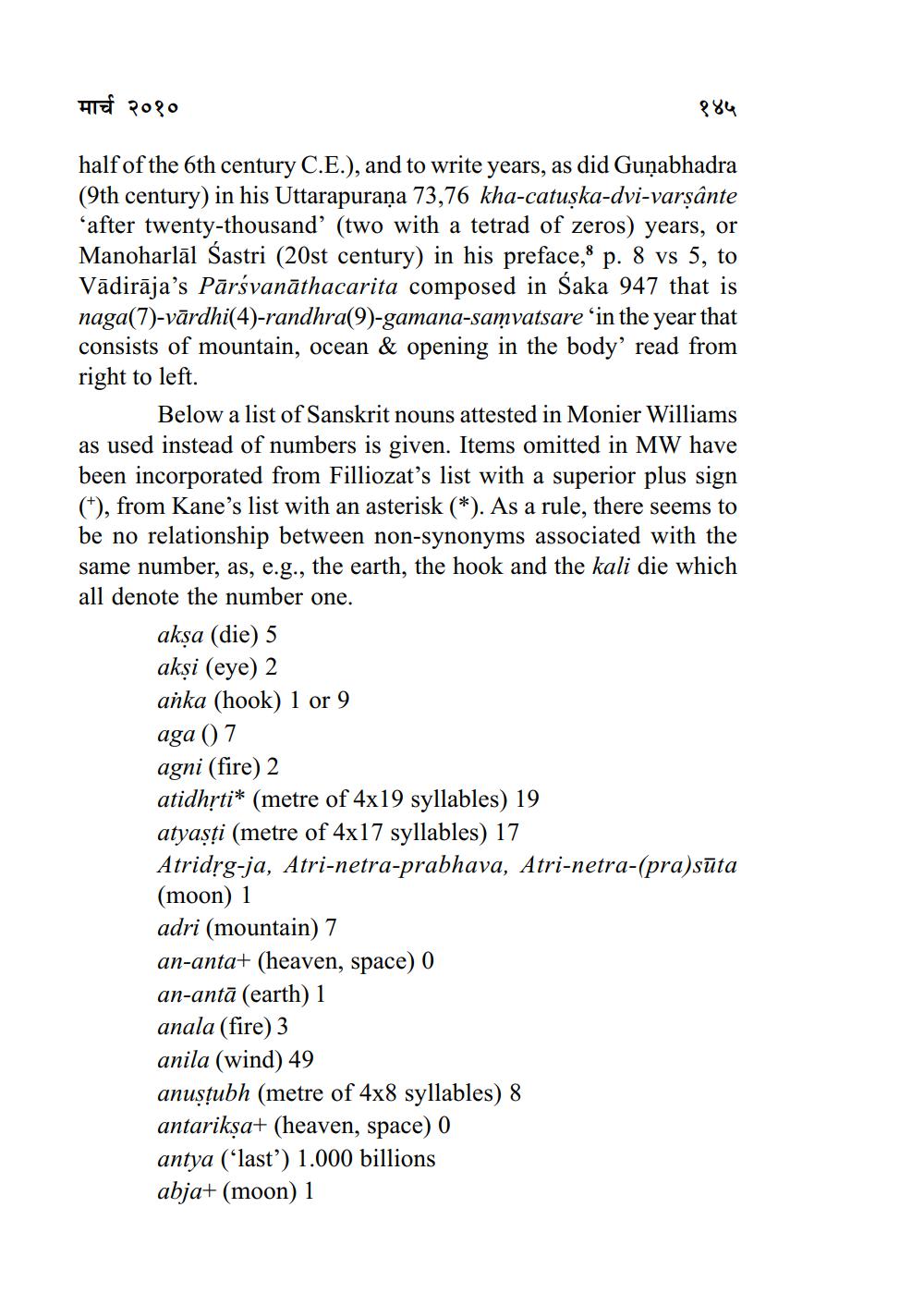Book Title: On Nouns with Numerical Vallue in Sanskrit Author(s): Willem B Bollee Publisher: ZZ_Anusandhan View full book textPage 2
________________ मार्च २०१० १४५ half of the 6th century C.E.), and to write years, as did Guņabhadra (9th century) in his Uttarapuraņa 73,76 kha-catuska-dvi-varşânte “after twenty-thousand' (two with a tetrad of zeros) years, or Manoharlāl Sastri (20st century) in his preface, p. 8 vs 5, to Vādirāja's Pārsvanāthacarita composed in Saka 947 that is naga(7)-vārdhi(4)-randhra(9)-gamana-samvatsare 'in the year that consists of mountain, ocean & opening in the body read from right to left. Below a list of Sanskrit nouns attested in Monier Williams as used instead of numbers is given. Items omitted in MW have been incorporated from Filliozat's list with a superior plus sign (), from Kane's list with an asterisk (*). As a rule, there seems to be no relationship between non-synonyms associated with the same number, as, e.g., the earth, the hook and the kali die which all denote the number one. akşa (die) 5 aksi (eye) 2 anka (hook) 1 or 9 aga () 7 agni (fire) 2 atidhịti* (metre of 4x19 syllables) 19 atyasți (metre of 4x17 syllables) 17 Atridựg-ja, Atri-netra-prabhava, Atri-netra-(pra)sūta (moon) 1 adri (mountain) 7 an-anta+ (heaven, space) 0 an-antā (earth) 1 anala (fire) 3 anila (wind) 49 anusțubh (metre of 4x8 syllables) 8 antariksa+ (heaven, space) 0 antya (ʻlast) 1.000 billions abja+ (moon) 1Page Navigation
1 2 3 4 5 6 7 8 9 10 11
